While Ross Gittins appears to be away, Domainfax is in need of a new RBA (and general) economic cheerleader and, alas, it has come in the form of the previously excellent Jessica Irvine who today pimps wages growth:
Everyone knows wages growth in Australia has been bumping along at record lows, but there are reasons to believe we may be at a turning point.
…The Reserve is watching closely for signs of a pick-up.
It’s true that the wage price index remains weak, but it is a narrow measure of wages growth. It purposely strips out a number of things to arrive at a “pure” measure of wages growth. For example, it doesn’t include bonuses, promotions or non-monetary benefits.
If you add in bonuses, wages growth in the private sector picked up to 2.6 per cent over the year ended March quarter, up from 2.1 per cent annual growth ended the December quarter.
There is also a glimmer of light in a keenly watched measure of “average compensation per employee” contained in the quarterly national accounts. This measure is referred to as the AENA, or “average earnings from the national accounts”.
AENA doesn’t strip out compensation effects, like promotions, bonuses and non-monetary benefits, and so has the potential to provide an early guide on increases in compensation through these other channels.
AENA has been particularly weak in recent years, as it historically is during periods of low wages growth, like the last recession.
But it is also the measure that also tends to pick up first when wages are picking up.
And AENA popped up in the March quarter, growing 0.4 per cent, potentially signalling a bottoming in wages growth.
Sure, AENA is a more volatile measure of wages growth, but the uptick should give the merchants of economic doom and gloom reason for caution.
Hmm, well, what about the merchants of RBA propaganda, formerly know as journalists, Jessica?
Let’s examine the evidence for this incipient wages boom. First, from the top down, the terms of trade have improved a little but have a long way yet to fall:
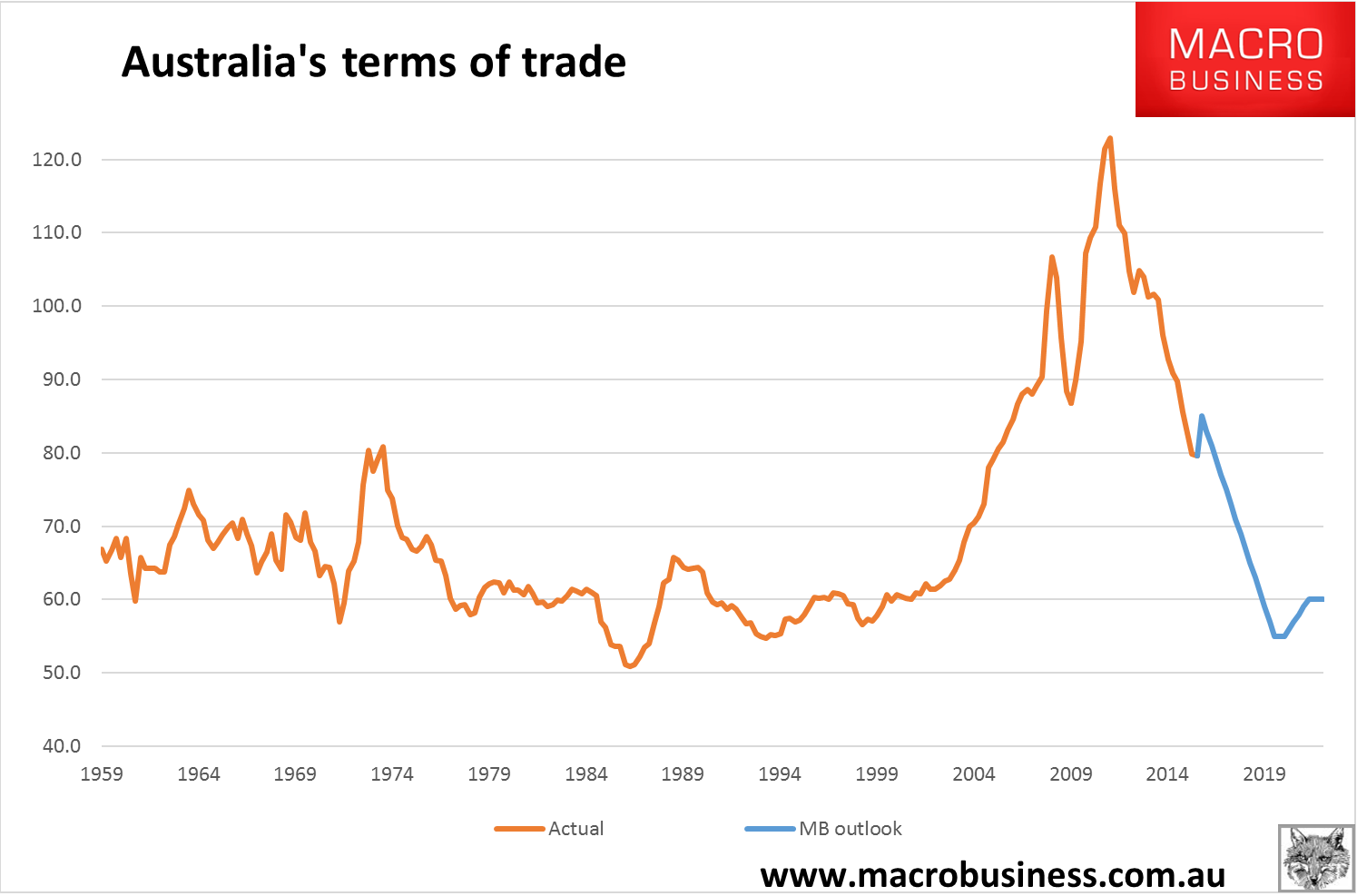
Another way to look at wages other than the Wage Price Index is Average Weekly Earnings which better captures what folks actually take home:
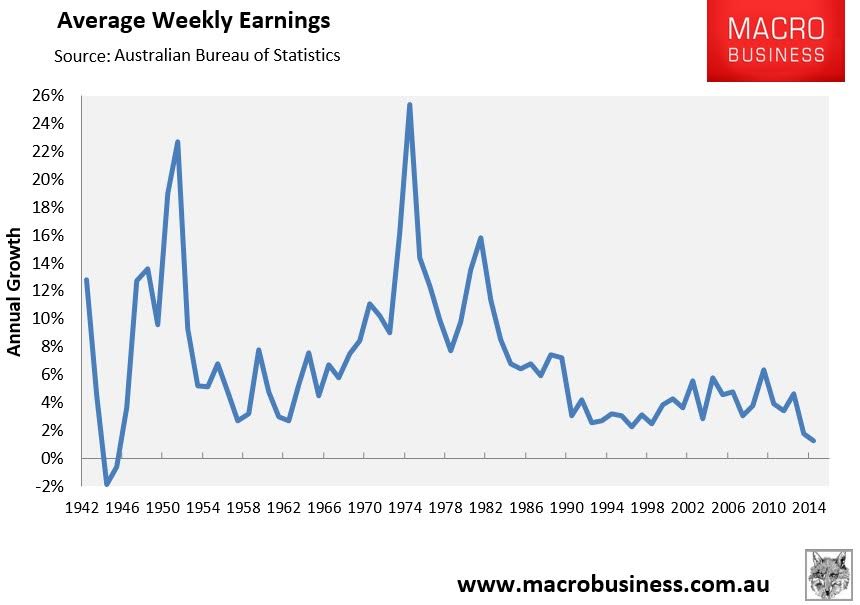
70 year lows.
How about enterprise bargaining agreements? Any sign of a turn there? From UBS:
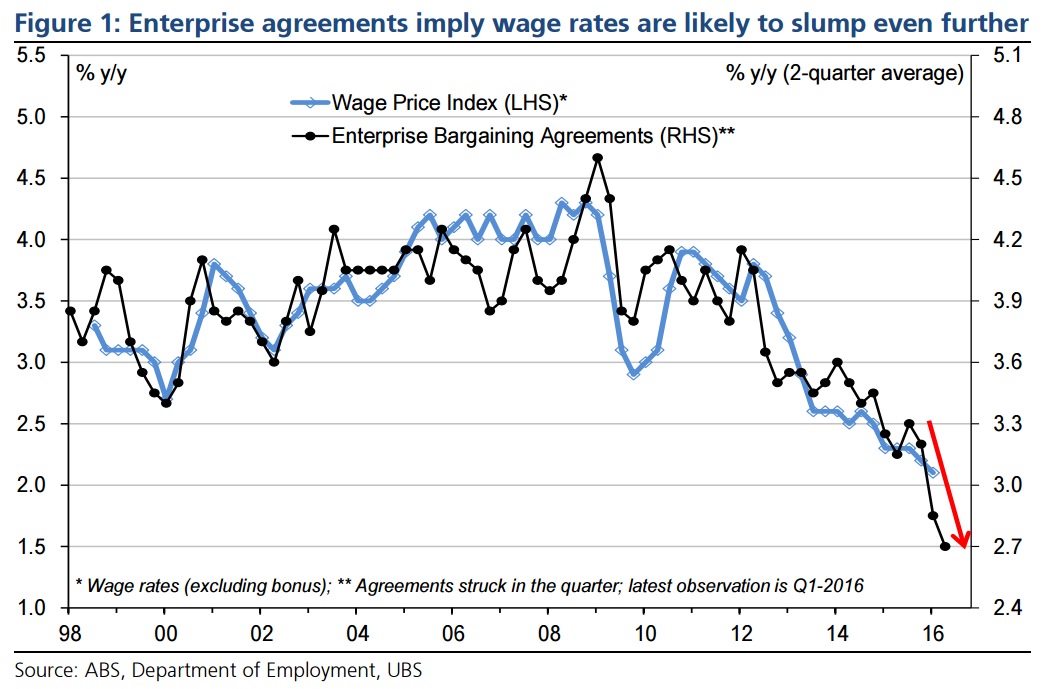
Hmmm….
Perhaps the Labour Market itself could give us a lead on the new boom. Although the headline unemployment rate has improved, under the bonnet it’s all about weakness with everything part time:
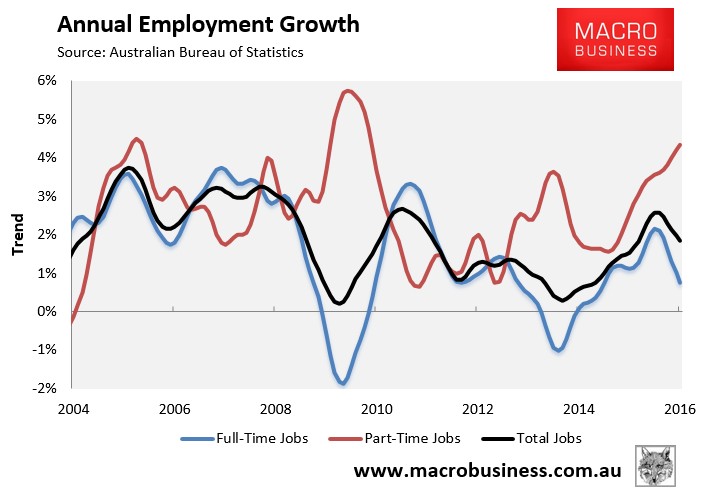
Hours worked trending down:
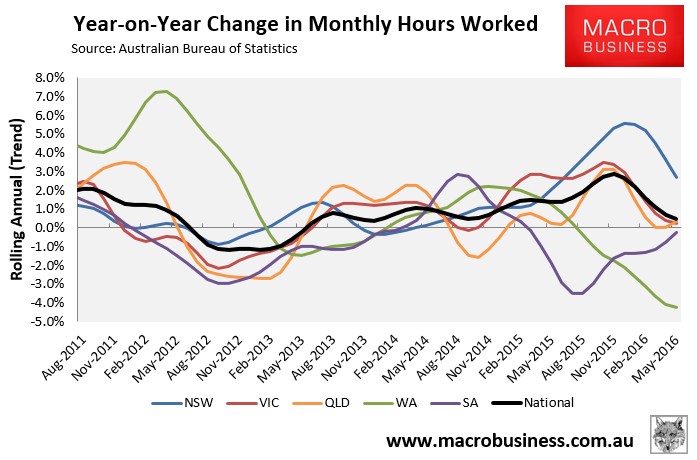
And underemployment charging:
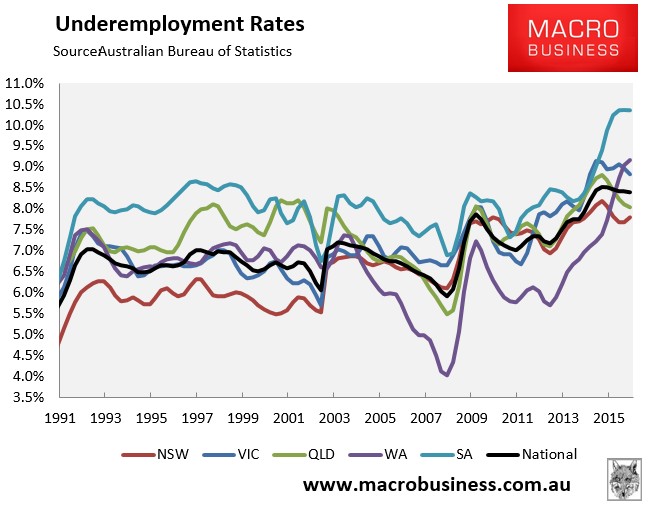
As well as this we have ahead in the next year:
- more mining capex downdraft;
- residential building peak and fall;
- car industry closure;
- stalling house price growth;
- more China slowing and terms of trade shock, and
- ongoing tight fiscal settings as the AAA is lost.
So, Jessica, you could look for infinitesimal upticks in income in support of access to a pathologically optimsitic central bank. Or you could instead do some “journalism” and dig into why the central bank along with other authorities are failing dismally to generate rising standards of living:


